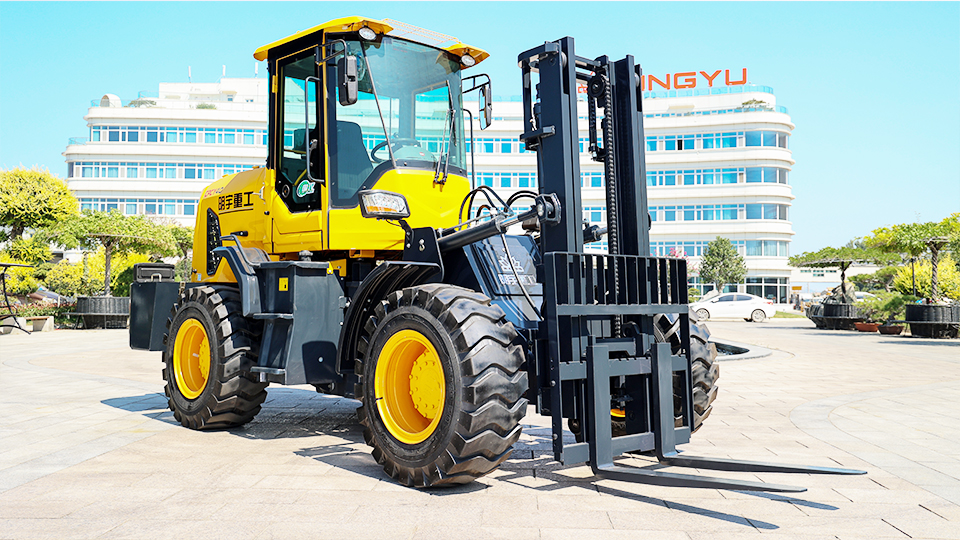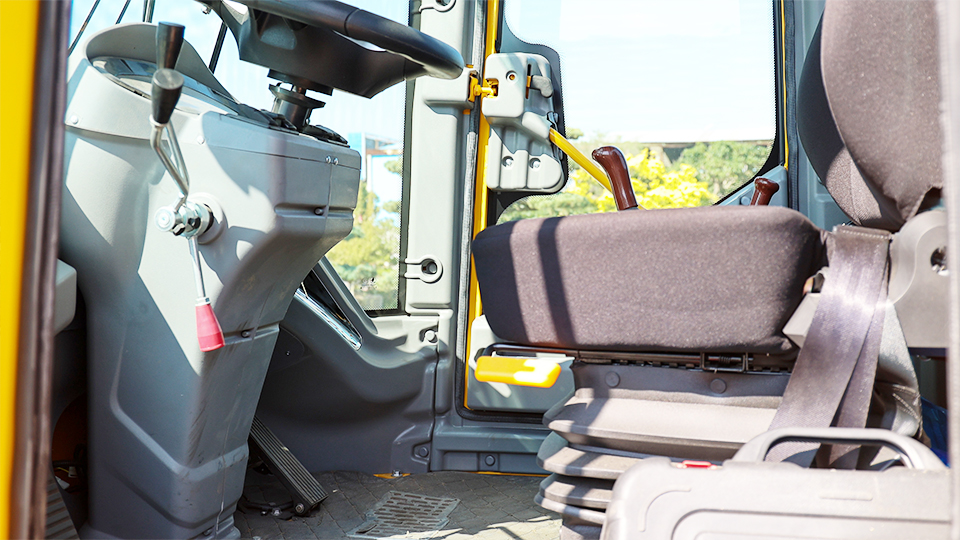
The short answer is a definitive yes. Forklifts are complex pieces of machinery subjected to demanding operational conditions. Unlike a passenger car that primarily navigates smooth roads, a forklift is constantly lifting, lowering, and transporting heavy, often uneven, loads on various surfaces. This continuous stress necessitates a robust maintenance program to ensure safety, reliability, and longevity. Neglecting maintenance is not only a recipe for costly breakdowns but also a significant safety hazard.
Why Forklifts Are Maintenance-Intensive Machines
To understand the maintenance requirements, one must first appreciate the inherent stresses a forklift endures. Here's a breakdown of the factors that contribute to their high maintenance needs:
Heavy Lifting and Load Handling: Forklifts are engineered to lift and maneuver immense weights. This puts tremendous strain on the hydraulic systems, masts, chains, forks, and the chassis itself. The hydraulic pumps and cylinders are under constant pressure, and the chains and cables are subjected to significant tensile forces.
Constant Start-Stop Cycles: A typical forklift operation involves frequent acceleration and deceleration, often in tight spaces. This puts stress on the transmission, brakes, and electrical systems (in electric models). The motors and controllers are constantly cycling, generating heat and wear.
Environmental Exposure: Forklifts operate in a wide range of environments. They may be exposed to dust, dirt, moisture, and extreme temperatures. These elements can contaminate fluids, corrode components, and clog filters, accelerating wear and tear.

Operator Habits and Training: The way a forklift is operated can have a significant impact on its lifespan and maintenance needs. Poor driving habits, such as harsh braking, sudden acceleration, or overloading the machine, can drastically increase wear on all components.
Complexity of Systems: Modern forklifts are sophisticated machines with intricate systems. They incorporate a combination of mechanical, hydraulic, electrical, and sometimes even electronic control systems. Each of these systems has its own set of maintenance requirements. For example, an electric forklift has batteries, a motor, and a controller, while an internal combustion (IC) forklift has an engine, a cooling system, and a fuel system.
The Three Pillars of Forklift Maintenance
Forklift maintenance can be broadly categorized into three types, each serving a distinct purpose:
Preventive Maintenance (PM): This is the cornerstone of any effective maintenance program. Preventive maintenance involves scheduled, routine checks and servicing to prevent breakdowns before they occur. It's a proactive approach that aims to identify and address minor issues before they escalate into major problems. PM typically includes:
Daily Pre-Shift Inspections: These are mandated by OSHA and are a critical part of the daily routine. The operator is responsible for checking fluid levels, tire condition, brakes, horn, lights, and other essential safety features.
Scheduled Service Intervals: Similar to an oil change on a car, forklifts have recommended service intervals based on operational hours. During these services, technicians perform a comprehensive inspection, change fluids and filters, and lubricate moving parts. These services are often tiered, with a more extensive inspection and component replacement at higher hour intervals.
Component Replacements: Based on the manufacturer's recommendations, certain components, like hydraulic hoses, chains, and brake pads, are replaced at specific intervals to prevent failure.
Corrective Maintenance (CM): This is the reactive side of maintenance. Corrective maintenance is performed to fix a problem or repair a broken component after a failure has occurred. While unavoidable at times, a high frequency of corrective maintenance often indicates a failing preventive maintenance program. The goal is to minimize the need for CM through a robust PM schedule.
Predictive Maintenance (PDM): This is a more advanced, data-driven approach to maintenance. Predictive maintenance uses sensors, data analysis, and condition monitoring to predict when a component is likely to fail. By monitoring factors like vibration, temperature, and fluid analysis, technicians can replace parts just before they fail, optimizing uptime and reducing maintenance costs. While less common in smaller operations, PDM is becoming increasingly prevalent in large fleets.

Key Components Requiring Regular Maintenance
A comprehensive maintenance program must address the specific needs of each major system within the forklift. Here's a detailed look at the key components that require regular attention:
1. Hydraulic System
The hydraulic system is the heart of the forklift's lifting mechanism. It consists of a hydraulic pump, cylinders, hoses, and the hydraulic fluid.
Fluid: Hydraulic fluid is essential for transmitting power. Over time, it can become contaminated with dirt, moisture, and metal particles. Regular fluid changes are crucial to prevent pump and cylinder wear. The fluid level must also be checked daily.
Hoses and Lines: Hydraulic hoses are subjected to high pressure and can develop cracks or leaks over time. A leaking hose can lead to a catastrophic loss of lifting power and a significant safety risk. Hoses should be inspected for wear, kinking, and leaks.
Cylinders and Seals: The hydraulic cylinders that lift the mast and tilt the forks rely on seals to prevent fluid leaks. Worn seals can cause the mast to drift or the forks to sag.
2. Electrical System (for Electric Forklifts)
The electrical system is the lifeblood of an electric forklift.
Battery: The battery is the most critical and often the most expensive component. Proper maintenance is key to maximizing its lifespan. This includes:
Regular Watering: Lead-acid batteries require distilled water to be added to the cells to maintain the proper electrolyte level.
Equalization Charging: This is a specialized charge cycle that helps to balance the charge across all the cells in the battery.
Proper Charging Procedures: Overcharging or undercharging can damage the battery.
Cleaning: The top of the battery should be kept clean and dry to prevent corrosion and a loss of charge.
Motor and Controller: The electric motor and its electronic controller are complex components that require regular inspection. Overheating, worn brushes (in older models), and loose connections can all lead to failure.
3. Internal Combustion (IC) Engine (for IC Forklifts)
IC forklifts run on propane, diesel, or gasoline and have their own unique maintenance needs.
Engine Fluids: Similar to a car, the engine oil, coolant, and transmission fluid need to be checked and changed at regular intervals.
Filters: Air filters, oil filters, and fuel filters are essential for a healthy engine. Clogged filters can reduce performance and lead to engine damage.
Cooling System: The radiator and cooling system must be kept clean and free of leaks to prevent the engine from overheating.
Fuel System: The fuel system, including the carburetor or fuel injectors, needs to be maintained to ensure proper fuel delivery and combustion. Propane forklifts have specific requirements for the fuel tank and lines.
4. Mast, Chains, and Forks
This is the front-end business end of the forklift.
Mast: The mast is the structure that lifts and lowers the load. The rollers and bearings that allow the mast to extend and retract must be lubricated and inspected for wear.
Chains: The lift chains are a critical safety component. They must be inspected daily for proper tension, wear, and rust. Worn or damaged chains must be replaced immediately.
Forks: The forks themselves should be inspected for cracks, bends, and wear. Forks are a consumable item and will eventually need to be replaced.
5. Tires and Brakes
These are crucial for the forklift's mobility and safety.
Tires: Forklift tires come in two main types: cushion (for indoor use) and pneumatic (for outdoor and rough terrain). Both types require regular inspection for wear, cuts, and proper pressure (for pneumatic tires). Worn tires can affect stability, braking, and ride comfort.
Brakes: The brakes are a primary safety feature. They need to be inspected for wear and proper function. Brake fluid levels (if applicable) should be checked, and pads or shoes replaced as needed.
The Financial and Safety Implications of Neglecting Maintenance
The question, "Do forklifts require lots of maintenance?" is fundamentally a question about the cost of ownership and safety. The answer has profound implications for a business's bottom line and its employees' well-being.
Financial Implications:
Increased Repair Costs: Neglecting a minor issue can lead to a major breakdown. For example, a worn hydraulic hose that is not replaced could rupture, causing a costly system failure and requiring a complete fluid flush and component replacement.
Downtime and Lost Productivity: A broken-down forklift means a halt in operations. This can lead to missed deadlines, shipping delays, and a significant loss of revenue. The cost of a day of downtime can far exceed the cost of a routine service.
Reduced Equipment Lifespan: A well-maintained forklift can last for 10 to 15 years or more. A poorly maintained one may need to be replaced in half that time, representing a substantial capital expenditure.
Higher Insurance Premiums: A poor safety record resulting from faulty equipment can lead to higher insurance premiums.
Safety Implications:
Accidents and Injuries: A forklift with faulty brakes, a damaged mast, or worn tires is a serious safety hazard. Equipment failure can lead to catastrophic accidents, causing severe injuries or even fatalities to the operator and other personnel.
OSHA Fines and Penalties: The Occupational Safety and Health Administration (OSHA) has strict regulations regarding forklift safety and maintenance. Failing to comply with these standards can result in hefty fines and legal action. Daily pre-shift inspections are a legal requirement, and a lack of a proper maintenance program can be a serious violation.
Damage to Goods and Property: A malfunctioning forklift can lose its load, damaging valuable inventory or warehouse infrastructure.
Conclusion
The answer to the question "Do forklifts require lots of maintenance?" is an undeniable yes. Forklifts are high-performance, high-stress machines that are essential to modern commerce. Their complex systems and demanding operational environments make a robust, proactive maintenance program not just a recommendation but a necessity.
Investing in a comprehensive maintenance program, encompassing daily pre-shift inspections, scheduled preventive maintenance, and a well-defined plan for corrective and predictive maintenance, is a non-negotiable part of responsible forklift ownership. While the upfront costs of maintenance may seem significant, they are a small price to pay when weighed against the financial and safety risks of neglecting these critical machines. A well-maintained forklift is a safer, more reliable, and more cost-effective asset, ensuring the smooth flow of operations and the well-being of the workforce. Ultimately, the question isn't whether forklifts require lots of maintenance, but whether a business can afford not to provide it.
Name: selena
Mobile:+86-13176910558
Tel:+86-0535-2090977
Whatsapp:8613181602336
Email:vip@mingyuforklift.com
Add:Xiaqiu Town, Laizhou, Yantai City, Shandong Province, China